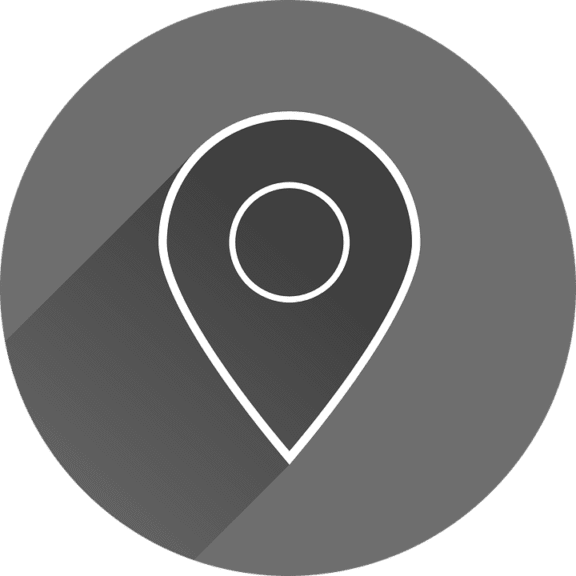When was the last time you bought a scale to weigh yourself? If it was long ago, you were living at the time in an analog world and your scale would respond to this model: Do you want to know your weight? Then measure your weight. That’s all. If you have bought one not too long ago,perhaps your scale has experienced the beginning of the “digital transformation”. But if you have recently invested some of your time on deciding that you wanted something different, your scale will surely be ready now to (digitally) transform your health.

EVOLUTION WHICH ENTAILS A CHANGE (OF MIND)
The evolution of the scale is a perfect metaphor to understand digital transformation and in particular how the healthcare sector has experienced and will experience a radical change, not only in terms of the technical and technological improvement of many devices, but on a number of aspects which imply a transformation of how the concept of health is conceived.
The difference between analog scales and digital display scales was in essence an aesthetic issue (a similar thing is happening regarding digital transformation: some are only applying cosmetic changes to hide that everything remains the same). Later came the models that presented weight breakdowns by fat, muscle and bones and provided some advice on the right amount of calories to eat in order to maintain a healthy weight…
Using a “digitally transformed scale” (DTS) implies a new conception of health.
To begin with, it is not an isolated device anymore. In the simplest case it integrates bluetooth and in the most complete version it includes a Wi-Fi connection. When we weigh ourselves we generate at least 10 facts about our body, the most interesting of which is perhaps the index of visceral fat. These data are uploaded to the cloud and are accessible from mobile apps or from our computers or tablets.
From there on, every time we measure our weight we will generate data that will cumulate historically. This will in turn provide a lot of information which, depending on the quality of the app, will be displayed on a series of graphics to help us manage and improve our health with the help of a professional, if we so wish.
The importance of patients/users managing their own health, which calls for a new model of interaction, was actually discussed in the 2016 Future Trends Forum (FTF) of the Bankinter Innovation Foundation. The forum’s debate aimed at answering three questions: how health will be consumed in the future, how it will be provided and how patients will be taken care of.
Technological innovation alone does not bring benefits unless the whole system is reorganized. And this reorganization requires rethinking the existing business model, technological and social innovation.

An example of a change of model, as mentioned in the FTF report, is the one achieved by the New York University Langone complex and its associated hospital. Clarity (and unification) of information has been the starting point of the institution’s entire strategic transformation. It is therefore not about availability of technology, but rather about reviewing all technology-based processes as well as other factors of the organization on which processes rely in order to optimize them and provide results in the form of information for users.
![]()
Location

![]()
Time

These experiences share a further common denominator, beyond the mere use of technology: motivation. Users must be motivated. A solution could be a digital avatar allowing to project our future health in a few years’ time (based on current data) and enabling decision making and behavioral changes along the way in order to improve our own well-being. Another already successful solution is using apps that follow every day our process of personal change towards improving our habits. The Plan 21 días, whose app was developed by Cuatroochenta, is a good example of this and proves that this is an issue that not only affects health care businesses but may also include many more sectors and develop corporate social responsibility.
DATA HAS BECOME AN ESSENTIAL ELEMENT
The uncontested fact is that the major change will be driven by:
Big Data + Artificial Intelligence (AI) + Machine Learning
Francisco Curbera, director of Watson Health Foundational Technologies at IBM, identifies the 6 main challenges of working with data in the area of healthcare:
DATA PROTECTION IN DIGITAL HEALTHCARE
The Big Data en salud digital – Ontsi – Red.es report explains that “many barriers must still be overcome and hugely significant risks must be solved before the maximum possible benefits linked to the technological possibilities of Big Data can be fully derived”. It also describes the barriers, risks and unmet needs of Big Data implementation on healthcare or digital healthcare in the particular case of Spain, which can be easily applied to other countries.
Regarding organizational barriers, he highlights “the importance of creating a framework of joint collaboration with other agents such as private insurance companies, pharmaceutical companies and other companies involved in digital healthcare services (i.e. apps developers)”. Regulatory barriers also play a crucial role, and that is why the confidentiality of information must be ensured whilst safeguarding further developments.
With respect to technical barriers, which still exist despite what one would think, the report refers to the lack of interoperability and integration of the different systems, as well as to excessive amounts of pilot tests that fail to make it to the next level, and which are primarily aimed at data collection rather than at generating valuable information. On the other hand, there is a lack of experienced data analysts in the area of healthcare who can provide support to the physicians’ decision-making relating to their patients through Big Data technologies. Finally, “beyond the ethical risks arising from issues related to confidentiality of information (…)”, unequal access to ICTs, especially among vulnerable groups, must be taken into consideration, as well as new situations where freedom and autonomy are reduced as a consequence of a greater control of citizens by the different healthcare actors.
Conclusión: esto acaba de empezar

Aunque a simple vista se ha avanzado mucho en el ámbito de la salud con la introducción de cierta tecnología (tanto hardware, como software), el cambio apenas ha comenzado. Como hemos visto, existen una serie de barreras y la necesidad perentoria de reorganizar un sistema que ha funcionado bien hasta ahora pero que tiene el riesgo de colapsar si no se toman medidas adecuadas. La tecnología va a ser la gran aliada pero no es suficiente. Es necesario por una parte seguir desarrollándola y formando profesionales que puedan trabajar desde ella en la mejora de la salud. Por otra cada persona debe tomar un rol más activo en la gestión de los aspectos que influyen en su bienestar a través de la salud, pues ya dispone de dispositivos y aplicaciones que le permiten monitorizar su cuerpo y adquirir hábitos saludables.

